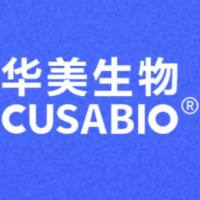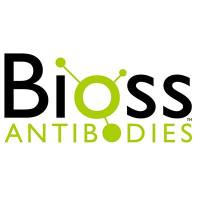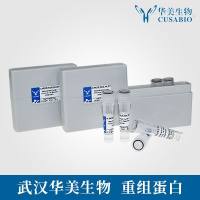Functional Characterization of Proteins Regulating Actin Assembly
互联网
- Abstract
- Table of Contents
- Materials
- Figures
- Literature Cited
Abstract
A very large, ever?increasing repertoire of actin?binding proteins regulates the assembly dynamics and the spatial organization of actin filaments, thus orchestrating the motile behavior of the cell. The authors describe a series of biochemical functional assays that allow one to characterize the function of a putative actin?binding protein in actin filament dynamics. These tests allow the characterization of three types of actin?binding proteins: G?actin?sequestering proteins, profilin?like proteins, and barbed?end capping proteins. Biochemical tests include the use of sedimentation of actin filaments, polymerization assays at the barbed or pointed end of actin filaments derived from fluorescently labeled actin, thermodynamic measurements of actin assembly at steady state and during turnover of actin filaments, measurements of nucleotide exchange on G?actin, and the use of the intrinsic or extrinsic fluorescence of actin to measure direct binding of different protein ligands to G?actin.
Keywords: actin; polymerization; actin?binding proteins; ADF/cofilin; profilin; actin?sequestering ??thymosins; capping proteins
Table of Contents
- Basic Protocol 1: Co‐sedimentation Assay for Measuring Binding of a Protein to F‐actin (or G‐actin)
- Basic Protocol 2: Direct Binding to G‐actin: Fluorescence Measurements
- Basic Protocol 3: Binding to Actin Derived from a Change in the Rate of Nucleotide Dissociation From G‐actin
- Basic Protocol 4: Steady‐State Measurements of Actin Assembly: Critical Concentration Plots
- Basic Protocol 5: Initial Rate of Filament Growth at Barbed or Pointed Ends
- Basic Protocol 6: Measurement of Dilution‐Induced Depolymerization of Filaments
- Basic Protocol 7: Measurements of the Treadmilling of Actin Filaments
- Support Protocol 1: Actin Purification from Rabbit Muscle
- Support Protocol 2: Preparation of Pyrenyl‐Labeled Actin
- Support Protocol 3: Preparation of 7‐Chloro‐4‐Nitrobenzeno‐2‐Oxa‐1,3‐Diazole‐Labeled Actin
- Reagents and Solutions
- Commentary
- Literature Cited
- Figures
Materials
Basic Protocol 1: Co‐sedimentation Assay for Measuring Binding of a Protein to F‐actin (or G‐actin)
Materials
Basic Protocol 2: Direct Binding to G‐actin: Fluorescence Measurements
Materials
Basic Protocol 3: Binding to Actin Derived from a Change in the Rate of Nucleotide Dissociation From G‐actin
Materials
Basic Protocol 4: Steady‐State Measurements of Actin Assembly: Critical Concentration Plots
Materials
Basic Protocol 5: Initial Rate of Filament Growth at Barbed or Pointed Ends
Materials
Basic Protocol 6: Measurement of Dilution‐Induced Depolymerization of Filaments
Materials
Basic Protocol 7: Measurements of the Treadmilling of Actin Filaments
Materials
Support Protocol 1: Actin Purification from Rabbit Muscle
Materials
Support Protocol 2: Preparation of Pyrenyl‐Labeled Actin
Support Protocol 3: Preparation of 7‐Chloro‐4‐Nitrobenzeno‐2‐Oxa‐1,3‐Diazole‐Labeled Actin
|
Figures
-

Figure 13.6.1 Treadmilling of the actin filament. This diagram emphasizes that the actin filament has a polar structure, with a barbed end and a pointed end. Under physiological ionic conditions, F‐actin is at a steady state with ATP‐G‐actin monomers. An energetic imbalance occurs between the two ends, because of ATP hydrolysis linked to F‐actin assembly. Monomer‐polymer exchanges at the two ends do not sum up to zero at each end; instead the barbed ends undergo net growth, balanced by equal depolymerization at the pointed end. This flux of subunits through the filament is called treadmilling. C ss , steady‐state (critical) concentration; D, ADP‐actin; DPi, ADP‐Pi ‐actin; T, ATP‐actin. View Image -

Figure 13.6.2 Functional assays of a G‐actin‐sequestering protein. (A ) Steady state measurements of F‐actin in the presence of increasing amounts of the sequestering protein (see ). F‐actin (1.5 µM, 10% pyrenyl labeled) with free barbed ends (solid line) or gelsolin‐capped barbed ends (dashed line) was supplemented by the protein as indicated. Linear depolymerization was consistent with a K d of 2 µM. (B ) Steady‐state measurements of F‐actin in the presence of the sequestering protein. Experiments were conducted as in A at 2, 1.5, and 1 µM F‐actin with free barbed ends. The parallel straight lines are consistent with a K d of 2 µM. (C ) Critical‐concentration ( C ss ) measurements for actin alone or in the presence of 2 µM sequestering protein. The sequestering protein shifts C ss for both free and capped barbed ends, in agreement with the K d obtained in B. Solid line, free barbed ends alone; short‐dashed line, capped barbed ends alone; dotted line, free barbed ends with sequestering protein; long‐dashed line, capped barbed ends with sequestering protein. (D ) Depolymerization rate measurements (see ). The solution of 2.5 µM F‐actin (50% pyrenyl labeled) with free barbed ends was diluted 20‐fold in F‐buffer at time zero in the absence (solid line) and presence (dotted line) of 10 µM sequestering protein. The sequestering protein has no effect on actin depolymerization. (E ) The sequestering protein inhibits pointed‐end growth of actin filaments (see ). The rate of pointed‐end growth was measured in the presence of 2.5 µM Mg‐ATP‐G‐actin, 2 nM gelsolin‐actin seeds, and the sequestering protein at the indicated concentration. The inhibition observed is consistent with a K d of 2 µM. (F ) The sequestering protein inhibits barbed‐end growth of actin filaments. The rate of barbed‐end growth was measured in the presence of 2.5 µM Mg‐ATP‐G‐actin and 0.16 nM spectrin‐actin seeds. The inhibition observed is consistent with a K d of 2 µM, as in E. (G ) Co‐sedimentation assay (see ). F‐actin (10 µM) was sedimented alone or in the presence of increasing amounts of the sequestering protein. The sequestering protein depolymerizes F‐actin, leading to an increasing amount of G‐actin in the supernatant (S) and less G‐actin in the pellet (P). Lines shown in A‐F represent typical experimental curves, derived from known proteins (e.g., thymosin β4 ). View Image -

Figure 13.6.3 Functional assays of profilin‐like proteins (barbed‐end assembly‐promoting factors). (A ) Steady‐state measurements of F‐actin in the presence of increasing amounts of profilin‐like protein. The experiment was conducted as in Figure A. When barbed ends are capped (dashed line), the profilin‐like protein depolymerizes F‐actin. Linear depolymerization was consistent with a K d of 2 µM. When the barbed ends are free (solid line), the profilin‐like protein fails to depolymerize F‐actin. (B ) Critical‐concentration ( C ss ) measurements for actin alone and in the presence of 2 µM profilin‐like protein. The experiment was conducted as in Figure C. Solid line, free barbed ends alone; short‐dashed line, capped barbed ends alone; dotted line, free barbed ends with sequestering protein; long‐dashed line, capped barbed ends with sequestering protein. (C ) Profilin‐like protein inhibits pointed growth of actin filaments. The inhibition is consistent with a K d of 2 µM. The experiment was conducted as in Figure E. (D ) The profilin‐like protein fails to inhibit barbed‐end growth of actin filaments. The experiment was conducted as in Figure F. (E ) Co‐sedimentation assay in the absence or presence of profilin‐like protein. The experiment was conducted as in Figure G. (F ) Depolymerization rate measurements in the absence (solid line) and presence (dotted line) of 10 µM profilin‐like protein. The experiment was conducted as in Figure D. The profilin‐like proteins have no effect on actin depolymerization. Lines shown in A‐D and F represent typical experimental curves derived from known proteins (e.g., profilin). View Image -

Figure 13.6.4 Functional assays of capping proteins. (A ) Steady state measurements of F‐actin in the presence of increasing amounts of capping protein. The experiment was conducted as in Figure A. When barbed ends are free (solid line), capping proteins depolymerize F‐actin, partially blocking all barbed ends; the maximum amount of unpolymerized actin equals the critical concentration of the pointed end ( C c = 0.6 µM, under physiological conditions). When barbed ends are capped (dashed line), addition of another capping protein has no effect on the steady‐state amount of F‐actin; all barbed ends remain capped and C ss remains equal to the C c at the pointed ends. (B ) C ss measurements for actin alone or in the presence of capping proteins. The experiment was conducted as in Figure C. When barbed ends are capped, capping proteins have no effect on C c . When barbed ends are free, capping proteins shift C c to 0.6 µM, in physiological conditions. Solid line, free barbed ends alone; dotted line, free barbed ends with capping protein; dashed line, capped barbed ends alone or with capping protein. (C ) Capping proteins do not inhibit pointed‐end growth of actin filaments. The experiment was conducted as in Figure E. (D ) Capping proteins inhibit barbed‐end growth of actin filaments. The experiment was conducted as in Figure F. (E ) Depolymerization rate measurements. The experiment was conducted as in Figure D. Capping proteins block depolymerization at the barbed end. Dotted line, no capping protein; solid lines, capping protein present at indicated concentrations. (F ) Co‐sedimentation assay. The experiment was conducted as in Figure G. At a saturating amount of capping protein, the amount of G‐actin in the supernatant corresponds to the C c at the pointed end. Lines shown in A‐E represent theoretical lines in each case. View Image
Videos
Literature Cited
| Literature Cited | |
| Boquet, I., Boujemaa, R., Carlier, M.F., and Preat, T. 2000. Ciboulot regulates actin assembly during Drosophila brain metamorphosis. Cell 102:797‐808. | |
| Carlier, M.F., Jean, C., Rieger, K.J., Lenfant, M., and Pantaloni, D. 1993. Modulation of the interaction between G‐actin and thymosin beta 4 by the ATP/ADP ratio: Possible implication in the regulation of actin dynamics. Proc. Natl. Acad. Sci. U.S.A. 90:5034‐5038. | |
| Carlier, M.F., Ressad, F., and Pantaloni, D. 1999. Control of actin dynamics in cell motility. Role of ADF/cofilin. J. Biol. Chem. 274:33827‐33830. | |
| Casella, J.F., Maack, D.J., and Lin, S. 1986. Purification and initial characterization of a protein from skeletal muscle that caps the barbed ends of actin filaments. J. Biol. Chem. 261:10915‐10921. | |
| Cassimeris, L., Safer, D., Nachmias, V.T., and Zigmond, S.H. 1992. Thymosin beta 4 sequesters the majority of G‐actin in resting human polymorphonuclear leukocytes. J. Cell. Biol. 119:1261‐1270. | |
| Combeau, C. and Carlier, M.F. 1988. Probing the mechanism of ATP hydrolysis on F‐actin using vanadate and the structural analogs of phosphate BeF3− and A1F4−. J. Biol. Chem. 263:17429‐17436. | |
| Combeau, C. and Carlier, M.F. 1989. Characterization of the aluminum and beryllium fluoride species bound to F‐actin and microtubules at the site of the gamma‐phosphate of the nucleotide. J. Biol. Chem. 264:19017‐19021. | |
| Didry, D., Carlier, M.F., and Pantaloni, D. 1998. Synergy between actin depolymerizing factor/cofilin and profilin in increasing actin filament turnover. J. Biol. Chem. 273:25602‐25611. | |
| Egile, C., Loisel, T.P., Laurent, V., Li, R., Pantaloni, D., Sansonetti, P.J., and Carlier, M.F. 1999. Activation of the CDC42 effector N‐WASP by the Shigella flexneri IcsA protein promotes actin nucleation by Arp2/3 complex and bacterial actin‐based motility. J. Cell Biol. 146:1319‐1332. | |
| Hug, C., Jay, P.Y., Reddy, I., McNally, J.G., Bridgman, P.C., Elson, E.L., and Cooper, J.A. 1995. Capping protein levels influence actin assembly and cell motility in dictyostelium. Cell 81:591‐600. | |
| Loisel, T.P., Boujemaa, R., Pantaloni, D., and Carlier, M.F. 1999. Reconstitution of actin‐based motility of Listeria and Shigella using pure proteins. Nature 401:613‐616. | |
| Nowak, E., Strzelecka‐Golaszewska, H., and Goody, R.S. 1988. Kinetics of nucleotide and metal ion interaction with G‐actin. Biochemistry 27:1785‐1792. | |
| Pantaloni, D. and Carlier, M.F. 1993. How profilin promotes actin filament assembly in the presence of thymosin beta 4. Cell 75:1007‐1014. | |
| Paunola, E., Mattila, P.K., and Lappalainen, P. 2002. WH2 domain: A small, versatile adapter for actin monomers. FEBS Lett. 513:92‐97. | |
| Perelroizen, I., Carlier, M.F., and Pantaloni, D. 1995. Binding of divalent cation and nucleotide to G‐actin in the presence of profilin. J. Biol. Chem. 270:1501‐1508. | |
| Pruyne, D., Evangelista, M., Yang, C., Bi, E., Zigmond, S., Bretscher, A., and Boone, C. 2002. Role of formins in actin assembly: Nucleation and barbed‐end association. Science 297:612‐615. | |
| Safer, D. and Nachmias, V.T. 1994. Beta thymosins as actin binding peptides. BioEssays 16:473‐479. | |
| Small, J.V., Stradal, T., Vignal, E., Rottner, K. 2002. The lamellipodium: Where motility begins. Trends Cell Biol. 12:112‐120 | |
| Sun, H.Q., Kwiatkowska, K., Wooten, D.C., and Yin, H.L. 1995. Effects of CapG overexpression on agonist‐induced motility and second messenger generation. J. Cell. Biol. 129:147‐156. | |
| Valentin‐Ranc, C. and Carlier, M.F. 1989. Evidence for the direct interaction between tightly bound divalent metal ion and ATP on actin. Binding of the lambda isomers of beta gamma‐bidentate CrATP to actin. J. Biol. Chem. 264:20871‐20880. | |
| Wallar, B.J. and Alberts, A.S. 2003. The formins: Active scaffolds that remodel the cytoskeleton. Trends Cell Biol. 13:435‐446. | |
| Uyemura, D.G., Brown, S.S., and Spudich, J.A. 1978. Biochemical and structural characterization of actin from Dictyostelium discoideum. J. Biol. Chem. 253:9088‐9096. |






